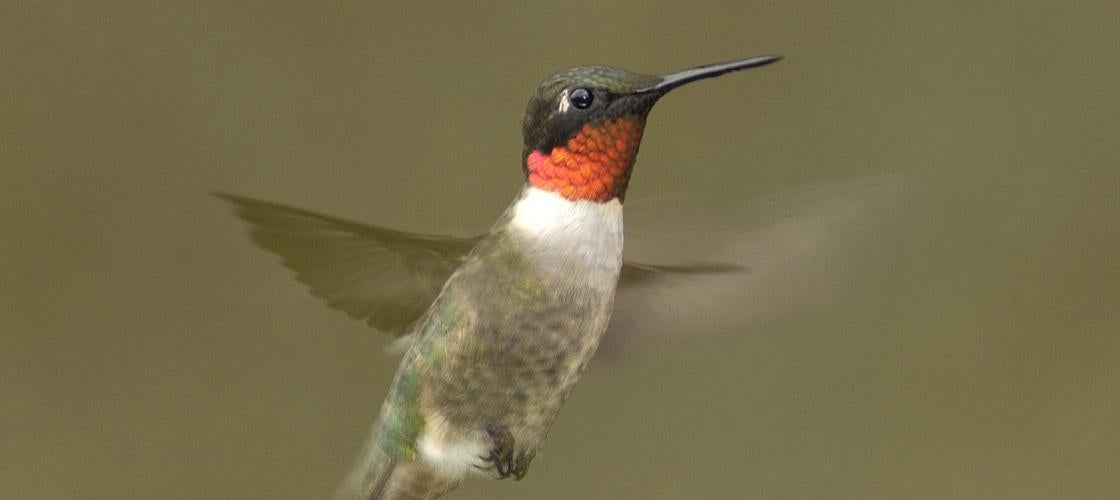A “glittering fragment of the rainbow” is what an early American naturalist called the hummingbird. He must have been impressed with its shimmering green plumage and crimson throat feathers.
He was no doubt fascinated by the hummingbird’s small size as well. Ruby-throated hummingbirds, the only hummers found in this area, are by far our smallest bird. They are a mere three inches long and weigh as little as one dime!
Hummingbirds employ their small size and hovering flight to suck nectar from flowers. They can fly backwards, sideways and, in battles with other hummingbirds, even upside down. Their tiny wings are a blur–beating 75 times per second!
Hummingbirds migrate to the Midwest in April and can be with us until October. Many people have discovered the pleasure of attracting them to their homes by providing special feeders at garden and hardware stores. Fill them with a mixture of one part sugar to four parts water. Hummingbirds normally feed at plants with red or orange tubular flowers, so plant columbines, begonias, geraniums and snapdragons to entice these fragments of the rainbow to your yard.
Ruby-Throated Hummingbird
- Hummingbirds are important pollinators for many species of plants that require just such a long-billed pollinator.
- Because of their small size, hummingbirds can end up providing food for many predators that eat insects, including spiders, praying mantises, birds and frogs.
- Though most often seen around nectar feeders and in parks and gardens, hummingbirds also nest in forests and forest edges, near streams and in other wooded places.
- Nests, built on tree branches, are of spider webbing, lichen and other plant material, and lined with plant down. This species appears to be doing well throughout its range and is not in need of any special management.
- Early-spring arrivals eat sap oozing from sapsucker-drilled holes and the insects nearby. They soon switch to eating nectar from many different kinds of flowers. During nesting, insects, a rich source of protein, are fed to the growing young. Sometimes these insects are stolen from spider webs.
For more on hummingbirds, visit the MDC’s Field Guide.




Recent Posts
























